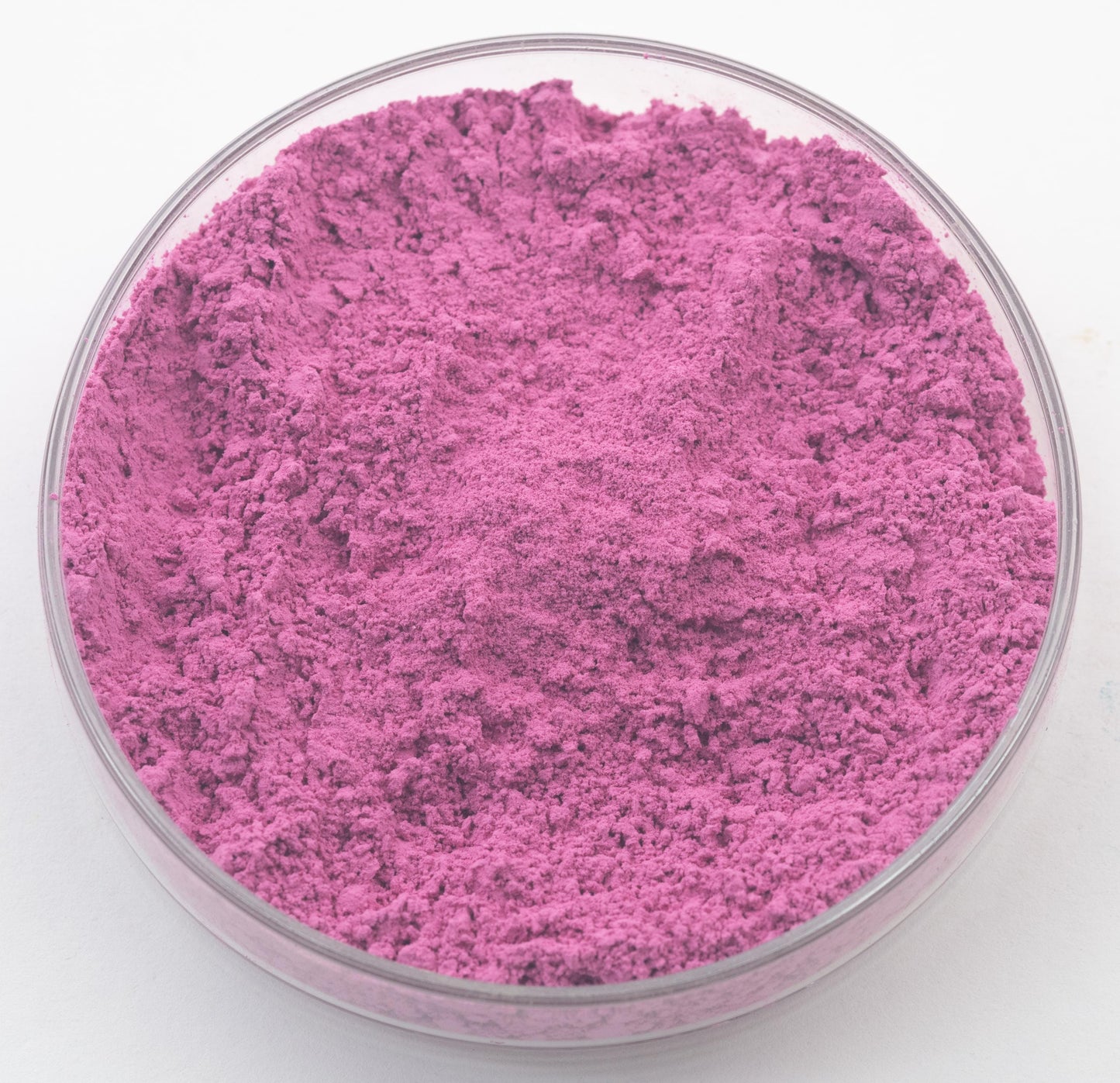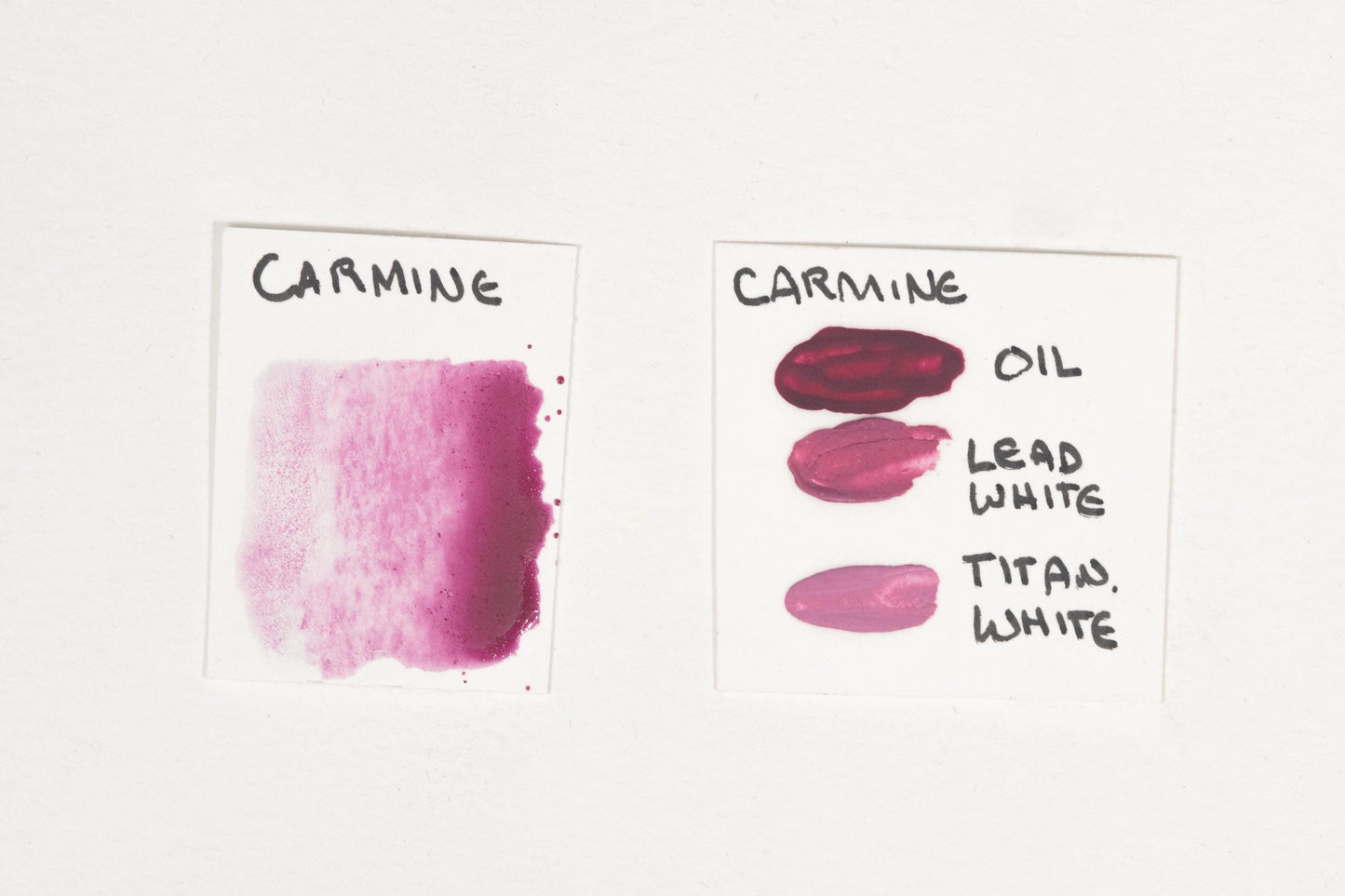Cochineal Carmine Lake
Cochineal Carmine Lake
Couldn't load pickup availability
Share



Description
Cochineal Carmine is a handmade natural single-pigment red dye and lake pigment derived from the cochineal insect (Dactylopius coccus), which feeds on the prickly pear cactus. The pigment is extracted from the dried bodies of these insects through a process of boiling and precipitation with alum or other mordants. This method yields a vibrant crimson-red color that has been prized for centuries in textiles, manuscript illumination, and fine art.
Cochineal Carmine produces a deep, rich red with a slightly bluish undertone, offering exceptional transparency and vibrancy. It is highly valued for its staining ability and smooth application in watercolor, ink, and textile dyeing. While it has excellent color intensity, its lightfastness can vary depending on the mordant and medium used. Properly prepared, it remains a luminous and highly sought-after natural red.
History
Cochineal has been used as a dye since ancient times, with early evidence of its use in Mesoamerican cultures such as the Aztecs and Mayans, who regarded it as a sacred pigment. When Spanish conquistadors arrived in the 16th century, they quickly recognized its value and began exporting it to Europe, where it became one of the most important red dyes of the Renaissance and Baroque periods. In the pictured artwork by Titian, 'Bacchus and Ariadne', Carmine lake is used for the beautiful flowing drapery of Bacchus.
Carmine was used extensively in manuscript illumination, textiles, and fine art painting, providing a brilliant red unmatched by most other natural dyes. It was favored by artists for its glowing, transparent qualities, particularly in watercolor and tempera. During the 18th and 19th centuries, it became a crucial pigment in cosmetics, food coloring, and medicine.
With the rise of synthetic dyes in the 20th century, cochineal production declined, but it remains in use today for traditional textile dyeing, historical restoration, and fine art applications. Modern interest in natural pigments and sustainable dyes has also revived its importance in certain industries.
Health and Safety
Precautions:
Keep out of reach of children and pets.
Do not consume.
Not for cosmetic or food usage unless food-grade certified.
For further health information, contact a poison control center.
Do not eat, drink, or smoke near dry dyes. Avoid breathing in dye dust and use a NIOSH-certified respirator with a sufficient rating.
Wash hands after handling.
Pigment Information
Dye Type: Natural (Organic) from Dactylopius coccus (Cochineal Insect)
Suitable Mediums: Watercolor, Ink, Textile Dyeing, Tempera
Lightfastness: Good (but varies with mordant and medium)
Opacity: High translucence
Other Names: Carmine Lake, Natural Red 4, Crimson Lake
Color Index Code: NR4
Image: 'Bacchus and Ariadne' by Titian from the National Gallery



